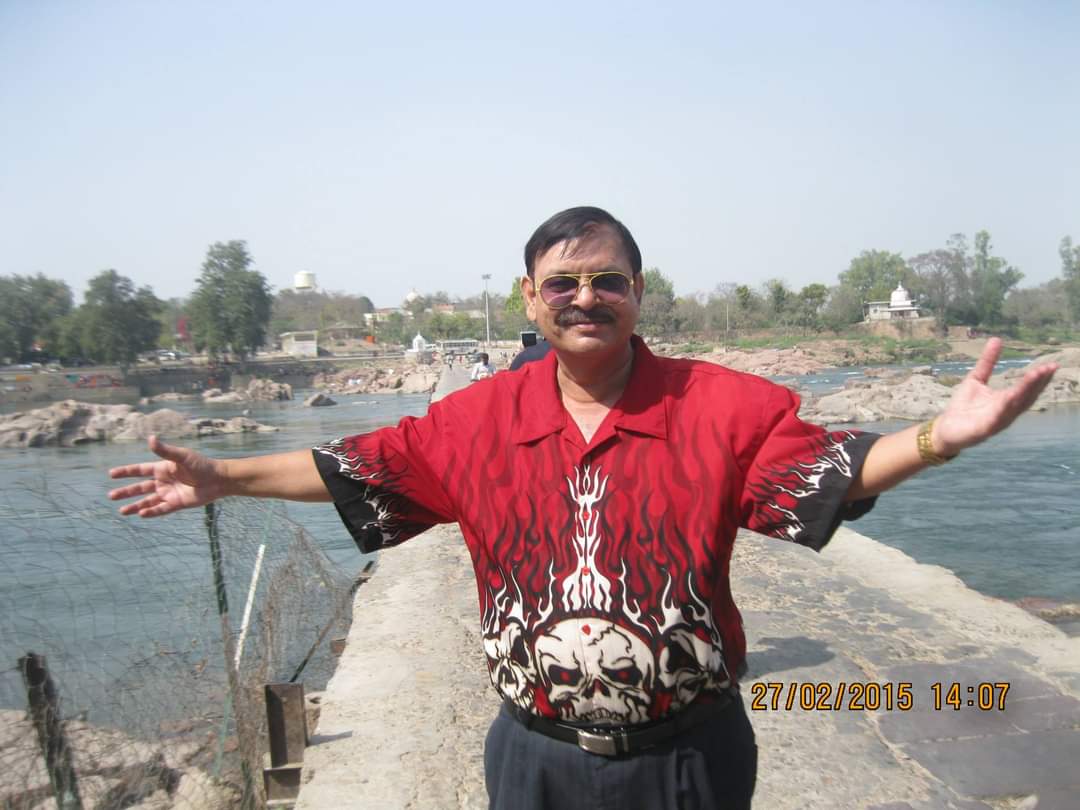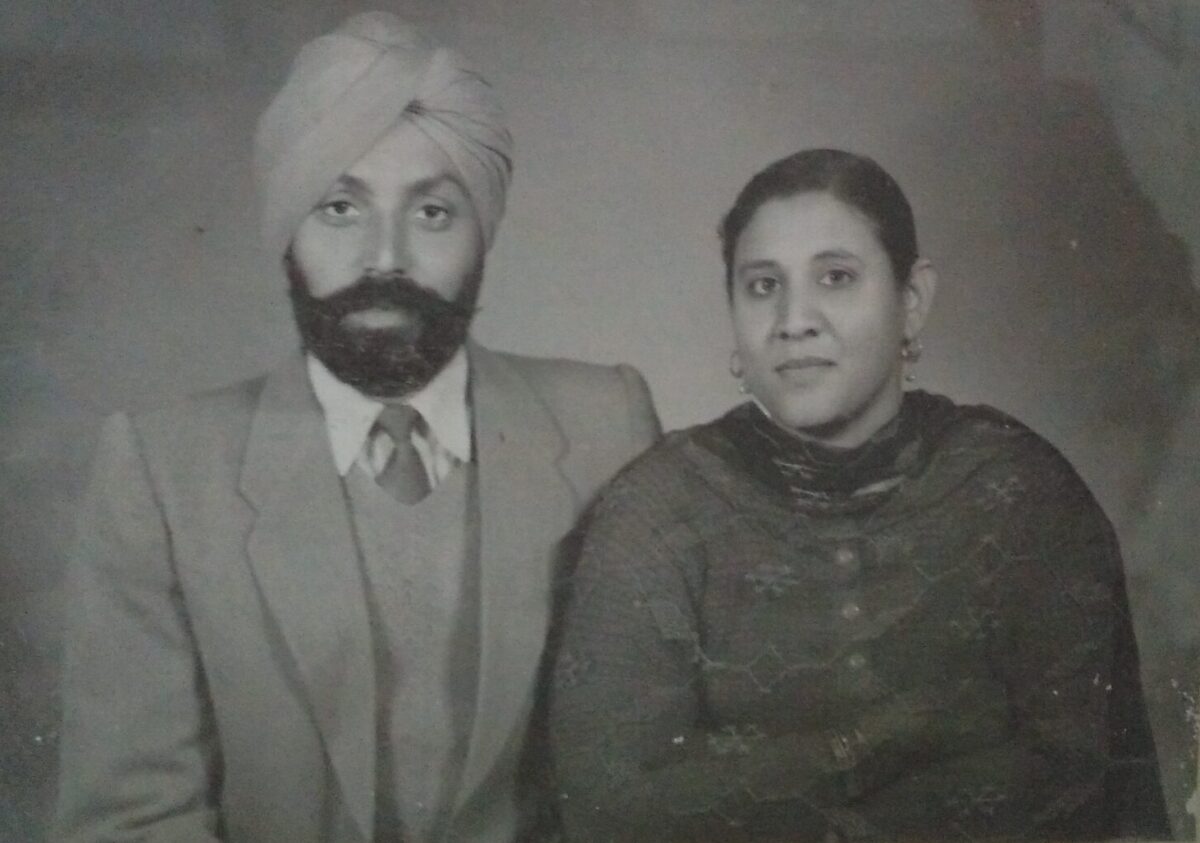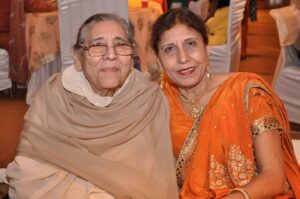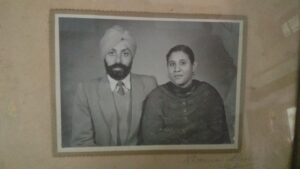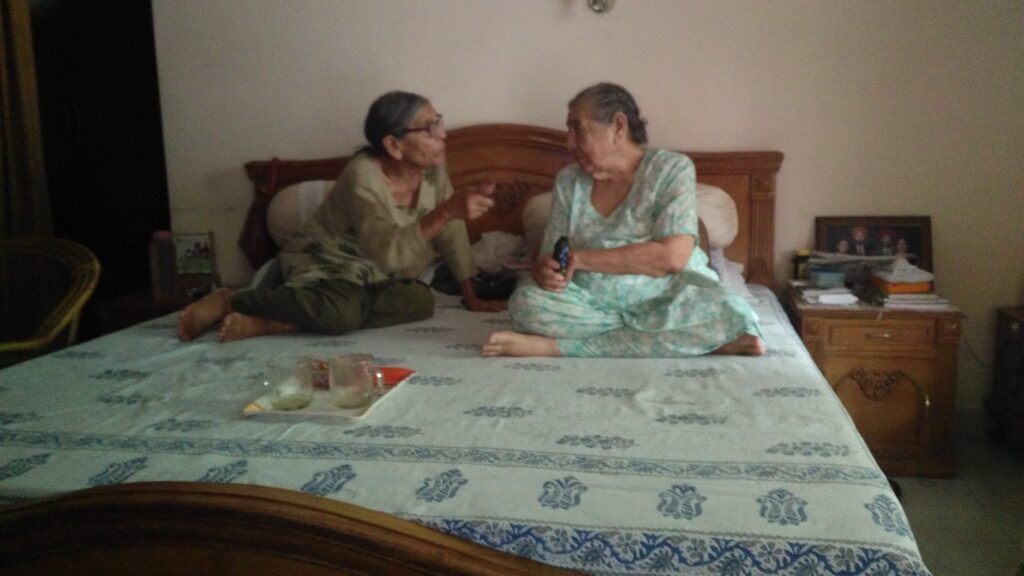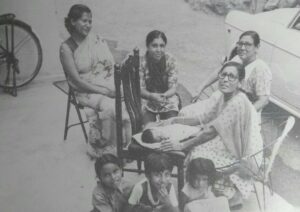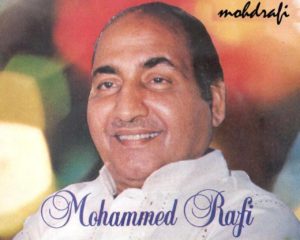 I am fond of Mohammad Rafi; indeed, so fond of him that I consider him the best, the most accomplished, and most versatile singer that the world ever produced. A few years ago, when I started to learn singing at a very late stage in my life (I am 71 years old now and I started to learn singing only about three to four years ago), I realised that there is no better singer to learn from than Rafi saheb. Such is the aura of his singing that if an ordinary, amateur, and untrained singer like me can sing at about five percent of his ability, I can start patting myself on the back. Rafi saheb was the A to Z of good singing. When a great contemporary, Manna Dey, was asked to rank Rafi as a singer, Manna Dey’s prompt and thought provoking response was, “I rank Mohammad Rafi as #1 to #10.” By this, he obviously meant that all other singers were and are ten ranks below.
I am fond of Mohammad Rafi; indeed, so fond of him that I consider him the best, the most accomplished, and most versatile singer that the world ever produced. A few years ago, when I started to learn singing at a very late stage in my life (I am 71 years old now and I started to learn singing only about three to four years ago), I realised that there is no better singer to learn from than Rafi saheb. Such is the aura of his singing that if an ordinary, amateur, and untrained singer like me can sing at about five percent of his ability, I can start patting myself on the back. Rafi saheb was the A to Z of good singing. When a great contemporary, Manna Dey, was asked to rank Rafi as a singer, Manna Dey’s prompt and thought provoking response was, “I rank Mohammad Rafi as #1 to #10.” By this, he obviously meant that all other singers were and are ten ranks below.
Raag Pahadi is the raag of my place in the hills, the Himalayas: Whispering Winds, Kandaghat. It is not related to any other hills. It is the most adorable raag of the Hindi films music director, the only raag that is also a dhun. Most of the songs composed in this raag are romantic melodies. But, there are some that are also sad and even melancholic numbers.
Just as it is in all genre’s of songs, Rafi saheb sang the best and the most memorable songs in Raag Pahadi. The first song for which my favourite lyricist, Shakeel Badayuni, received his Filmfare Award was composed by Ravi in Raag Pahadi: Chaudvinh ka chand ho and sung by Rafi saheb.
With this, lets start our journey into a dozen songs sung by Rafi saheb in Raag Pahadi.
Song #1
Zara sun haseena – e – nazneen
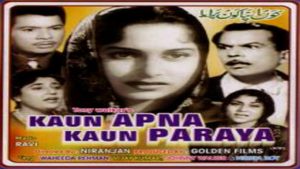 I sang this on 03 Aug 2021 on the birth anniversary of my favourite lyricist: Shakeel Badayuni. Ravi composed it in Raag Pahadi. Shakeel and Ravi combine made many songs together describing the husn (beauty) of the beloved; indeed, the best in this genre’.
I sang this on 03 Aug 2021 on the birth anniversary of my favourite lyricist: Shakeel Badayuni. Ravi composed it in Raag Pahadi. Shakeel and Ravi combine made many songs together describing the husn (beauty) of the beloved; indeed, the best in this genre’.
It is from the 1963 Niranjan movie Kaun Apna Kaun Praya starring Vijay Kumar and Waheeda Rehman.
Please enjoy: Zara sun haseena-e-nazneen…
Song #2
Jaane kya dhoondati rehti hain
After the romantic melody in Raag Pahadi, lets straightway get to a sad song in the same raag.
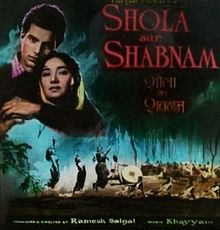 One thing that would hit you about it is that even though it is among the difficult songs of Rafi saheb, I sang it at a fairly early stage of my learning to sing.
One thing that would hit you about it is that even though it is among the difficult songs of Rafi saheb, I sang it at a fairly early stage of my learning to sing.
Khayyam utilised the complete range of Rafi saheb in this song from Mandra to Teevra. These very powerful lyrics are by Kaifi Azmi with the most telling line: Jo bik gaya woh khareedaar nahin ho sakta.
It is from the 1961 Mohan Saigal movie Shola Aur Shabnam starring Dharmendra and Tarla Mehta.
Please enjoy: Jaane kya dhoondati rehti hain yeh aankhen mujh mein…
Song #3
Chahunga main tujhe saanjh savere
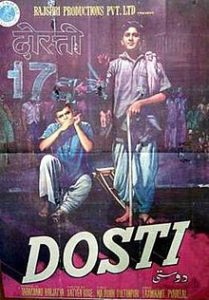
Satyen Bose’s 1964 movie Dosti was only the second movie (after Parasmani) of a new music director duo: Laxmikant Pyarelal. The movie won six of the seven Filmfare Awards for which it was nominated: Best Movie: Trachand Barjatya and Best Music Director Laxmikant Pyarelal.
This song and Jaanewalo zara mud ke dekho mujhe were composed by LP in Raag Pahadi. Indeed, it is among the most unforgettable Raag Pahadi songs in Hindi movies.
The song won Rafi saheb another Filmfare Award and also for Majrooh Sultanpuri, the lyricist.
Please enjoy: Chahunga main tujhe saanjh savere…
Song #4
Parbaton ke pedon par shaam ka basera hai
This was my first duet in Raag Pahadi. Rafi saheb sang it with Suman Kalyanpur.
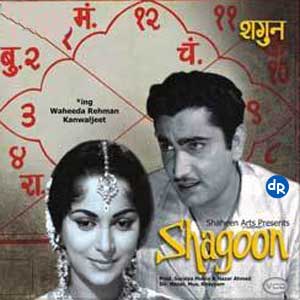 This is from the 1964 movie Shagun starring Kamaljeet and Waheeda Rehman. Ten years after doing this movie, they got married.
This is from the 1964 movie Shagun starring Kamaljeet and Waheeda Rehman. Ten years after doing this movie, they got married.
This was penned by Sahir Ludhianvi and composed by Khayyam. At this stage, let me tell you that Pahadi was the pet raag of Khayyam. In the movie Noorie, for example, he composed as many as three songs in Pahadi.
Please enjoy: Parbaton ke pedon par….
Song #5
Chal udd jaa re panchhi
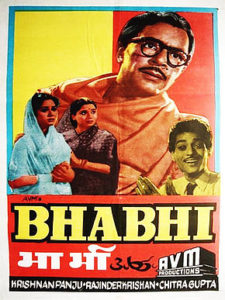
This is from the AVM production, the 1957 Krishnan – Panju movie Bhabhi starring Balraj Sahni, Pandhari Rai, and Nanda.
This is, indeed, an iconic song. It occurred in the movie in various parts. The song was penned by Rajinder Krishan and composed by Chitragupta.
Mohammad Rafi’s alaaps at various parts of the song, especially at the end, are out of this world.
Please enjoy: Chal udd jaa re panchhi…
Song #6
Suhani raat dhal chuki
This is, perhaps the most iconic song of Mohammad Rafi in Raag Pahadi. Last year, being the birth centenary year of Mohammad Rafi, I sang 100 of his songs. This was the first, on 01 Jan 24.
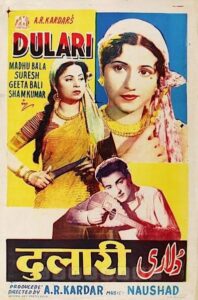 It is from the 1949 AR Kardar movie Dulari starring Madhubala, Geeta Bali, and Suresh.
It is from the 1949 AR Kardar movie Dulari starring Madhubala, Geeta Bali, and Suresh.
The song was penned by Shakeel Badayuni and composed by Naushad.
Please enjoy: Suhani raat dhal chuki…
Song #7
Tukde hain mere dil ke
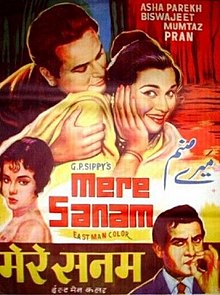 This is from the 1965 Amar Kumar movie Mere Sanam starring Biswajeet and Asha Parekh. The movie was a remake of Come September starring Rock Hudson and Gina Lollobrigida.
This is from the 1965 Amar Kumar movie Mere Sanam starring Biswajeet and Asha Parekh. The movie was a remake of Come September starring Rock Hudson and Gina Lollobrigida.
The song was penned by Majrooh Sultanpuri and composed by OP Nayyar.
The picturisation of the song was widely appreciated.
Please enjoy: Tukde hain mere dil ke…
Song #8
Do sitaron ka zameen par hai milan aaj ki raat
The 1960 FU Sunny movie Kohinoor was devised to be a happy and lively movie since Dilip Kumar had gone into depression by acting in such melancholic movies as the 1957 movie Devdas. Meena Kumari acted opposite him.
The song was penned by Shakeel Badayuni and coomposed by Naushad. Being a duet, the female part of it was sung by Lata Mangeshkar.
Please enjoy: Do sitaron ka zameen par hai milan aaj ki raat…
Song #9
O door ke mussafir hamko bhi saath lele re
This, too, was penned by Shakeel Badayuni and composed by Naushad.
It is a sad Pahadi.
It is from the 1955 movie Udan Khatola starring Dilip Kumar and Nimmi.
Please enjoy: O door ke mussafir…
Song #10
Janewalo zara mud ke dekho mujhe
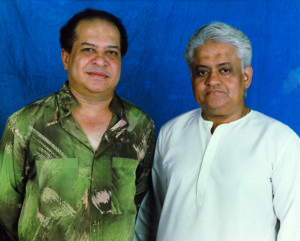
This, too, is a sad Pahadi. I mentioned it above in Song #3 from the 1964 Satyen Bose movie Dosti, which won six out of the seven awards it was nominated for.
This, too, was penned by Majrooh Sultanpuri and composed by Laxmikant Pyarelal.
Please enjoy: Janewalo zara mud ke dekho mujhe…
Song #11
Chaudhvin ka chand ho
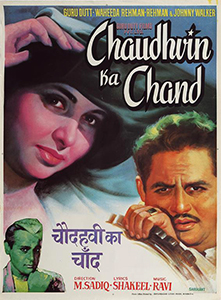 This is, by far, the best and most popular song in Raag Pahadi. As I said earlier, it won the lyricist Shakeel Badayuni the first of the hat-trick of Filmfare Awards. Ravi composed the song.
This is, by far, the best and most popular song in Raag Pahadi. As I said earlier, it won the lyricist Shakeel Badayuni the first of the hat-trick of Filmfare Awards. Ravi composed the song.
This was the title song of the 1960 M Sadiq movie Chaudhvin Ka Chand starring Guru Dutt and Waheeda Rehman.
Please enjoy: Chaudhvin ka chand ho…
Song #12
Jo waada kiya woh nibhana padhega
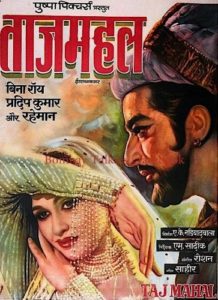 The 1963 movie Taj Mahal was also directed by M Sadiq. It starred Pradeep Kumar as Emperor Shajehan and Bina Rai as Mumtaz.
The 1963 movie Taj Mahal was also directed by M Sadiq. It starred Pradeep Kumar as Emperor Shajehan and Bina Rai as Mumtaz.
The song won Sahir Ludhainvi his first Filmfare Award as the Best Lyricist. The composer, Roshan, too, won the Filmfare Award for the sound track of this movie.
I sang this song to Lyn on our anniversary on 12 Dec 2024. Being a duet, the female part was sung by Lata Mangeshkar.
Please enjoy: Jo waada kiya woh nibhana padhega…
I hope you liked my rendition of the top twelve songs of Mohammad Rafi in Raag Pahadi.
Please keep accessing this blog for the best in Hindi songs.
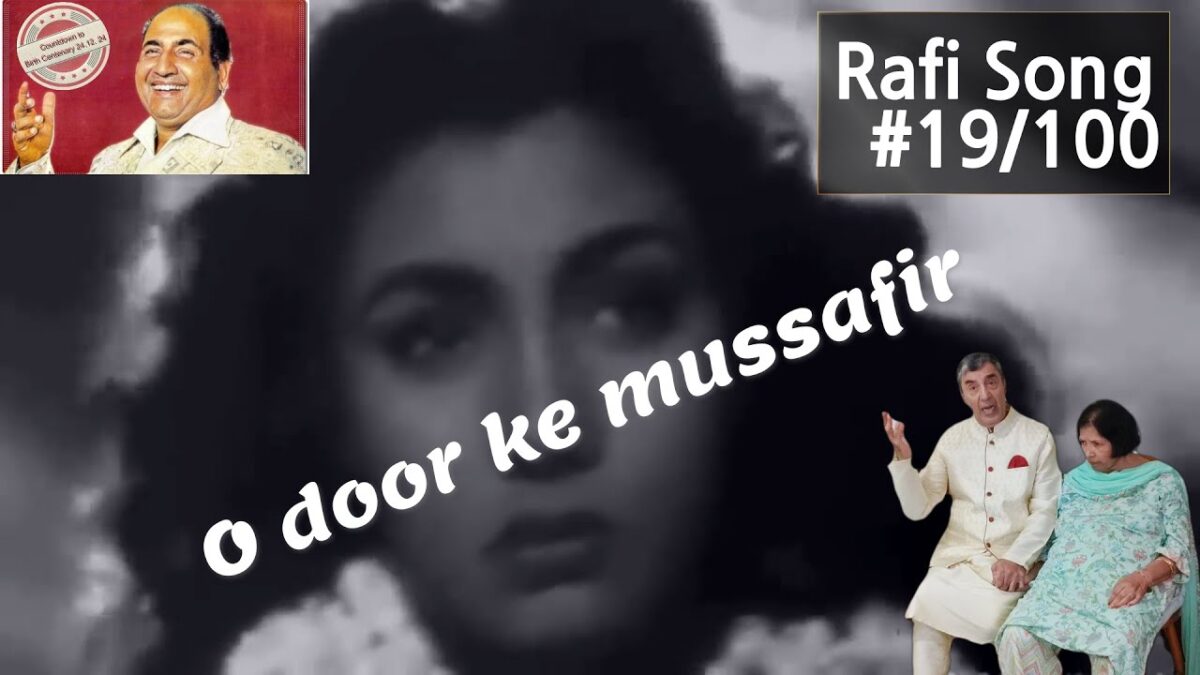

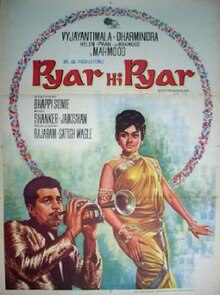 This was the title song of the 1968 movie Pyar Hi Pyar starring Dharmendra and Vyjayanthimala.
This was the title song of the 1968 movie Pyar Hi Pyar starring Dharmendra and Vyjayanthimala.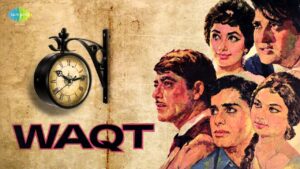 This song was composed by Ravi in Raag Pilu on the lyrics of Sahir Ludhianvi. It was sung by Manna Dey as playback for Balraj Sahni singing to his wife Achla Sachdev in a doston ki mehfil at home on their wedding anniversary.
This song was composed by Ravi in Raag Pilu on the lyrics of Sahir Ludhianvi. It was sung by Manna Dey as playback for Balraj Sahni singing to his wife Achla Sachdev in a doston ki mehfil at home on their wedding anniversary. This is from superstar Rajesh Khanna‘s debut movie Aakhri Khat, a 1966 movie directed by Chetan Anand. He was offered this role in the movie after winning the All India Talent Contest organised by United Producers and Filmfare. Indrani Mukherjee acted opposite him.
This is from superstar Rajesh Khanna‘s debut movie Aakhri Khat, a 1966 movie directed by Chetan Anand. He was offered this role in the movie after winning the All India Talent Contest organised by United Producers and Filmfare. Indrani Mukherjee acted opposite him.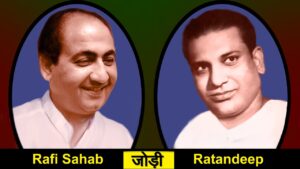 Its lyrics are by Tajdar Taj and composition is that of Ratandeep Hemraj.
Its lyrics are by Tajdar Taj and composition is that of Ratandeep Hemraj.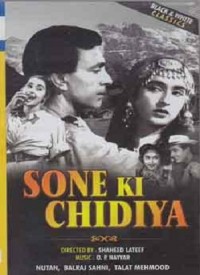 This was a beautiful 1958 Shaheed Latif movie Sone Ki Chidiya (penned by Ismat Chugtai who later wrote Garam Hawa). The movie is about Nutan who is an impoverished orphan. A relative’s family adopts her. Everyone in the family treats her like a servant. And then, she comes into money with her talent. Now, everyone treats her as a Sone Ki Chidiya. She wants to commit suicide being ill treated by the family both when she is poor and then when she becomes rich. Balraj Sahni inspires her with this song.
This was a beautiful 1958 Shaheed Latif movie Sone Ki Chidiya (penned by Ismat Chugtai who later wrote Garam Hawa). The movie is about Nutan who is an impoverished orphan. A relative’s family adopts her. Everyone in the family treats her like a servant. And then, she comes into money with her talent. Now, everyone treats her as a Sone Ki Chidiya. She wants to commit suicide being ill treated by the family both when she is poor and then when she becomes rich. Balraj Sahni inspires her with this song.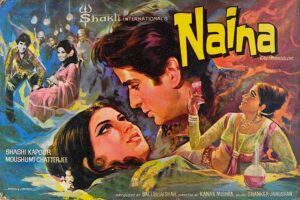 It is from the 1973 movie Naina based roughly on Daphne Du Maurier’s Rebecca. It starred Shashi Kapoor, Maushmi Chatterjee and Rajshree.
It is from the 1973 movie Naina based roughly on Daphne Du Maurier’s Rebecca. It starred Shashi Kapoor, Maushmi Chatterjee and Rajshree.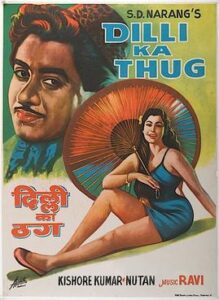
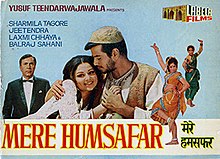 I am very fond of this Mukesh-Lata duet singing for Jeetendra and Sharmila Tagore in an open truck.
I am very fond of this Mukesh-Lata duet singing for Jeetendra and Sharmila Tagore in an open truck.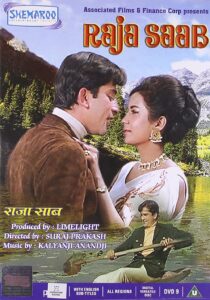 This duet is from their 1969 movie Raja Saab. Mohammad Rafi and Suman Kalyanpur sang for them. Both the lyrics by Anand Bakshi and the tune by Kalyanji Anandji have a Punjabi touch about it.
This duet is from their 1969 movie Raja Saab. Mohammad Rafi and Suman Kalyanpur sang for them. Both the lyrics by Anand Bakshi and the tune by Kalyanji Anandji have a Punjabi touch about it.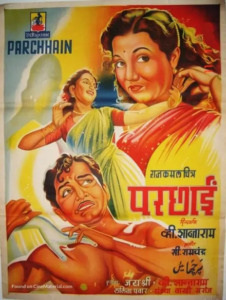 I took this Talat Mahmood song from the 1952 V Shantaram movie Parchhain starring himself and his wife Jayshree.
I took this Talat Mahmood song from the 1952 V Shantaram movie Parchhain starring himself and his wife Jayshree.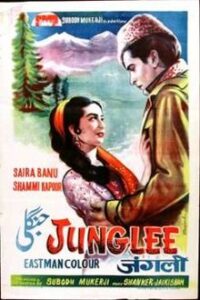 And now we have songs during the Birth Centenary Year of the greatest singer on earth: Mohammad Rafi.
And now we have songs during the Birth Centenary Year of the greatest singer on earth: Mohammad Rafi.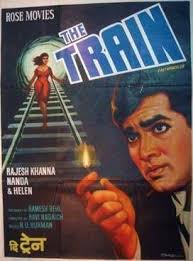 Rajesh Khanna re-ushered the era of Kishore Kumar into Hindi movies. However, even he would have acknowledged that the songs Rafi saheb sang for him were classic, popular, and added to the success of the movies.
Rajesh Khanna re-ushered the era of Kishore Kumar into Hindi movies. However, even he would have acknowledged that the songs Rafi saheb sang for him were classic, popular, and added to the success of the movies.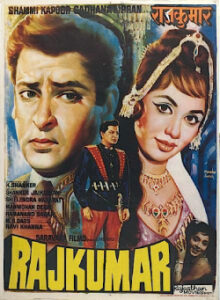 This is from the 1964 movie Rajkumar with Shammi Kapoor in the title role opposite Sadhana.
This is from the 1964 movie Rajkumar with Shammi Kapoor in the title role opposite Sadhana.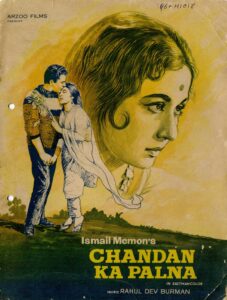 Many a times you come across a Mohammad Rafi song that didn’t become as popular as others, but nevertheless with superb rendition, lyrics and composition.
Many a times you come across a Mohammad Rafi song that didn’t become as popular as others, but nevertheless with superb rendition, lyrics and composition.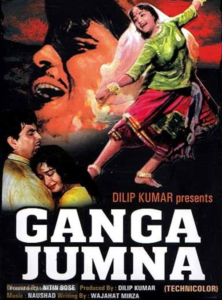 It is a classic composition of Naushad Ali on the lyrics of Shakeel Badayuni for the only production of Dilip Kumar: Gunga Jumna starring him with Vyjayanthimala.
It is a classic composition of Naushad Ali on the lyrics of Shakeel Badayuni for the only production of Dilip Kumar: Gunga Jumna starring him with Vyjayanthimala.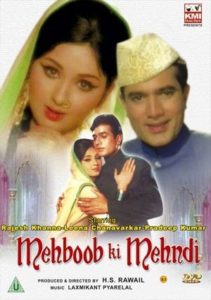 Once again, with the magic of Mohammad Rafi singing for Rajesh Khanna.
Once again, with the magic of Mohammad Rafi singing for Rajesh Khanna.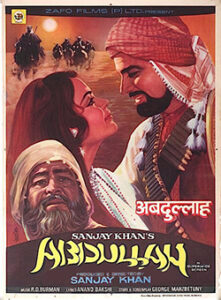 This is a beautiful composition of RD Burman for Sanjay Khan’s movie Abdullah starring him in the title role with Zeenat Aman as the object of his love.
This is a beautiful composition of RD Burman for Sanjay Khan’s movie Abdullah starring him in the title role with Zeenat Aman as the object of his love.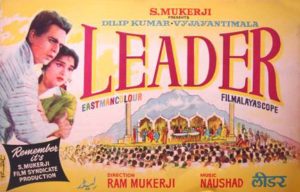
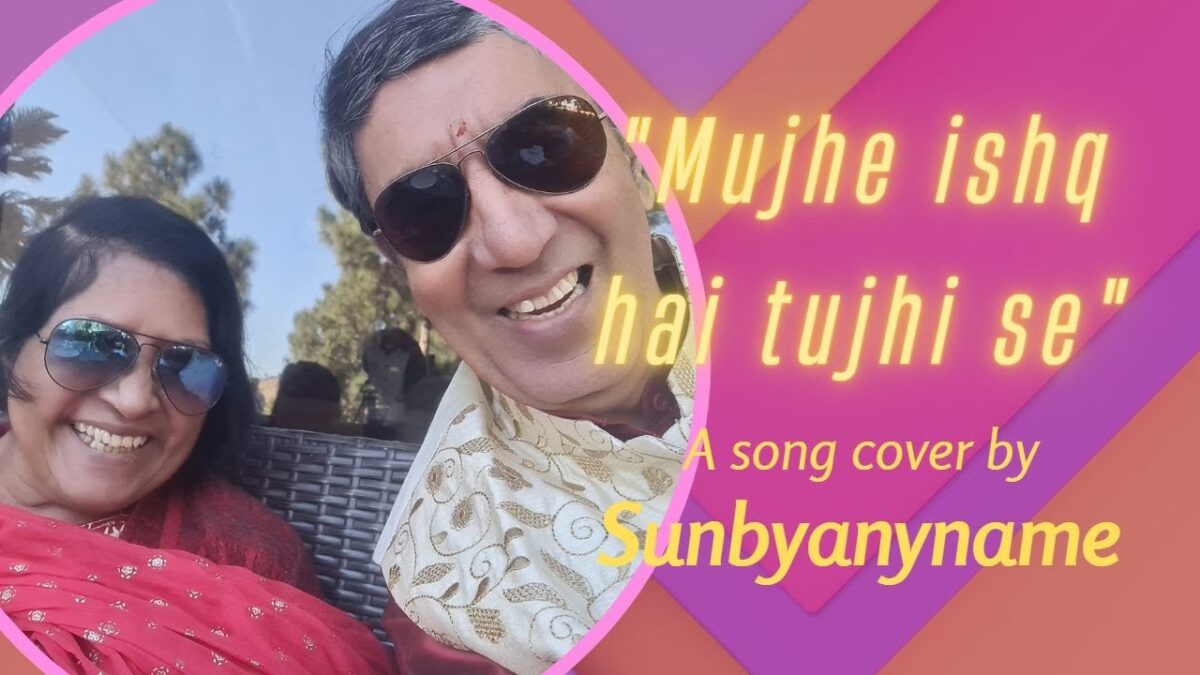
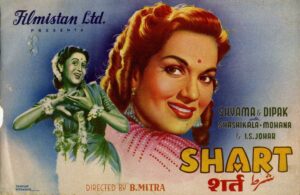 It is from the 1954 movie Shart starring Deepak and Shyama. SH Bihari‘s lyrics both for the Hemant Kumar and Geeta Dutt versions actually say everything that I wanted to tell her: we shall be together and even death won’t do us apart.
It is from the 1954 movie Shart starring Deepak and Shyama. SH Bihari‘s lyrics both for the Hemant Kumar and Geeta Dutt versions actually say everything that I wanted to tell her: we shall be together and even death won’t do us apart.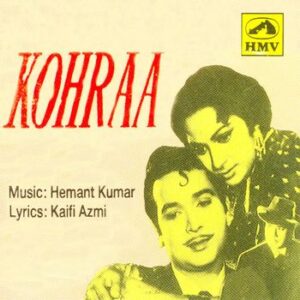 By this time, I was singing somewhat regularly to and for Lyn. As is the case with most of us, this then was one of the first songs sung to Lyn. It is from the 1964 movie Kohra starring Biswajeet and Waheeda Rehman. Kaifi Azmi‘s lyrics were composed and sung by Hemant Kumar:
By this time, I was singing somewhat regularly to and for Lyn. As is the case with most of us, this then was one of the first songs sung to Lyn. It is from the 1964 movie Kohra starring Biswajeet and Waheeda Rehman. Kaifi Azmi‘s lyrics were composed and sung by Hemant Kumar: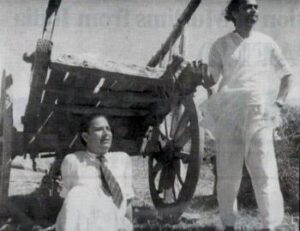 I knew it won’t be long before I shall be singing Shakeel Badayuni – Naushad song to her. Shakeel happens to be my favourite poet and lyricist. All these years, I have known that Shakeel said exactly what I want to say to Lyn in her condition.
I knew it won’t be long before I shall be singing Shakeel Badayuni – Naushad song to her. Shakeel happens to be my favourite poet and lyricist. All these years, I have known that Shakeel said exactly what I want to say to Lyn in her condition.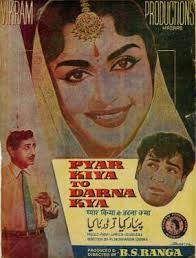 This is from the 1963 movie Pyar Kiya To Darna Kya, the title of the movie taking its name from the mukhada of the 1960 K Asif movie Mughal-e-Azam, put together by Shakeel Badayuni and Naushad Ali.
This is from the 1963 movie Pyar Kiya To Darna Kya, the title of the movie taking its name from the mukhada of the 1960 K Asif movie Mughal-e-Azam, put together by Shakeel Badayuni and Naushad Ali.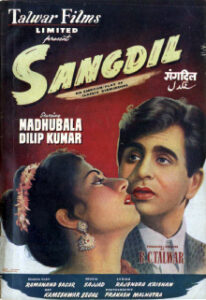 The first one was a Talat Mahmood song composed by Sajjad Hussain. The maestro, Madan Mohan, was so fascinated by Sajjad’s composition that he used the same for his Tujhe kyaa sunayun main dilruba.
The first one was a Talat Mahmood song composed by Sajjad Hussain. The maestro, Madan Mohan, was so fascinated by Sajjad’s composition that he used the same for his Tujhe kyaa sunayun main dilruba.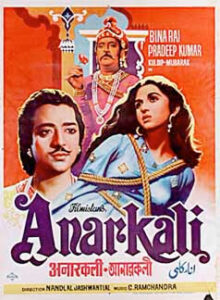 This is from the 1953 iconic movie Anarkali starring Bina Rai in the title role with Pradeep Kumar as Salim, prince to emperor Akbar.
This is from the 1953 iconic movie Anarkali starring Bina Rai in the title role with Pradeep Kumar as Salim, prince to emperor Akbar.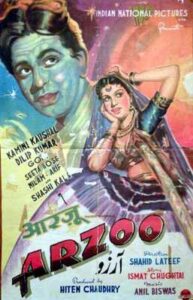 The third of the five songs for that wedding anniversary was from the 1965 super-hit movie: Arzoo. Rajendra Kumar in disguise as an old man sings in the party thrown by Sadhana‘s father.
The third of the five songs for that wedding anniversary was from the 1965 super-hit movie: Arzoo. Rajendra Kumar in disguise as an old man sings in the party thrown by Sadhana‘s father.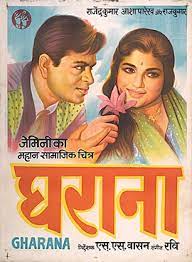 The fourth of the five songs for that wedding anniversary was by Shakeel Badayuni. He has the only hat-trick of Filmfare awards, ie, from 1961 (the second ever Filmfare award for a Lyricist) to 1963. The first two of these were composed by Ravi. This was the second one.
The fourth of the five songs for that wedding anniversary was by Shakeel Badayuni. He has the only hat-trick of Filmfare awards, ie, from 1961 (the second ever Filmfare award for a Lyricist) to 1963. The first two of these were composed by Ravi. This was the second one.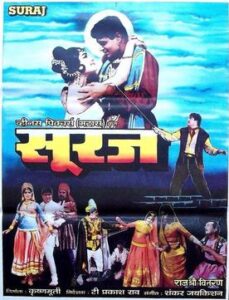 And the final song of that anniversary, ie, fifth one of five, was this duet between Mohammad Rafi and Suman Kalyanpur singing for Rajendra Kumar and Vyjayanthimala for the 1966 super-hit movie Suraj.
And the final song of that anniversary, ie, fifth one of five, was this duet between Mohammad Rafi and Suman Kalyanpur singing for Rajendra Kumar and Vyjayanthimala for the 1966 super-hit movie Suraj.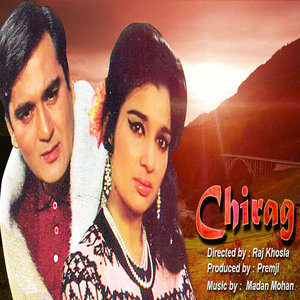 The first of the six songs was this gem by Madan Mohan in Raag Jhinjhoti. It was penned by Majrooh Sultanpuri by using (by permission) a line of a nazm by Faiz Ahmad Faiz made famous by Noorjehan singing it: Mujhse pehli si mohabbat mere mehboob na maang.
The first of the six songs was this gem by Madan Mohan in Raag Jhinjhoti. It was penned by Majrooh Sultanpuri by using (by permission) a line of a nazm by Faiz Ahmad Faiz made famous by Noorjehan singing it: Mujhse pehli si mohabbat mere mehboob na maang.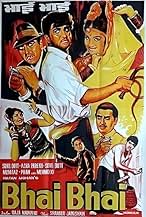 This is from the 1970 movie Bhai Bhai starring Sunil Dutt and Asha Parekh. It was penned by Hasrat Jaipuri and composed by Shankar Jaikishan. It was sung by Sunil Dutt singing to Asha Parekh in a party.
This is from the 1970 movie Bhai Bhai starring Sunil Dutt and Asha Parekh. It was penned by Hasrat Jaipuri and composed by Shankar Jaikishan. It was sung by Sunil Dutt singing to Asha Parekh in a party.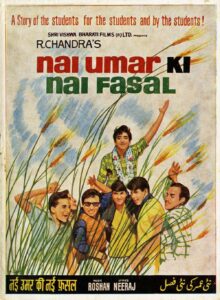 The third of the six songs sung on the Dec 2022 anniversary has special meaning for me. This is from the first movie (released on 01 Jan) of the year 1966: Nai Umr Ki Nai Fasal. This R Chandra movie starred Rajeev and Tanuja and has some of the best songs sung by Mohammad Rafi. I saw the movie on a portable screen in our colony in Jawahar Nagar in Mandi, Himachal Pradesh.
The third of the six songs sung on the Dec 2022 anniversary has special meaning for me. This is from the first movie (released on 01 Jan) of the year 1966: Nai Umr Ki Nai Fasal. This R Chandra movie starred Rajeev and Tanuja and has some of the best songs sung by Mohammad Rafi. I saw the movie on a portable screen in our colony in Jawahar Nagar in Mandi, Himachal Pradesh.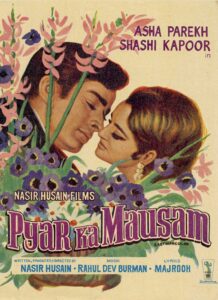 I have always been impressed with this song sung on separate occasions in the 1969 movie Pyar Ka Mausam starring Shashi Kapoor and Asha Parekh. Kishore Kumar sang it for Bharat Bhushan and Rafi saheb sang it for Shashi Kapoor.
I have always been impressed with this song sung on separate occasions in the 1969 movie Pyar Ka Mausam starring Shashi Kapoor and Asha Parekh. Kishore Kumar sang it for Bharat Bhushan and Rafi saheb sang it for Shashi Kapoor.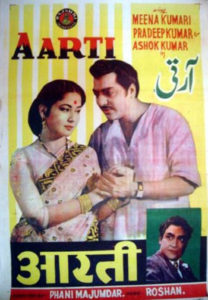 The 1962 movie Aarti starring Pradeep Kumar, Meena Kumari, and Ashok Kumar has some of the most unforgettable songs penned by Majrooh Sultanpuri and composed by Roshan.
The 1962 movie Aarti starring Pradeep Kumar, Meena Kumari, and Ashok Kumar has some of the most unforgettable songs penned by Majrooh Sultanpuri and composed by Roshan.

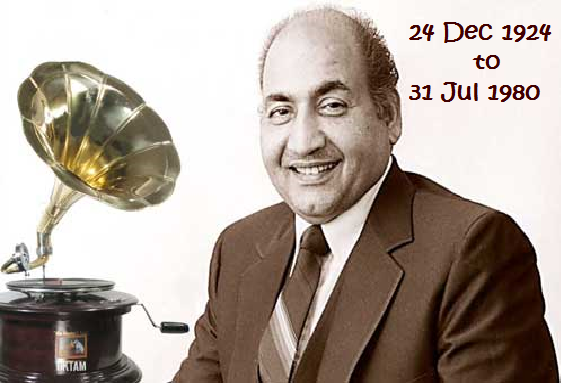
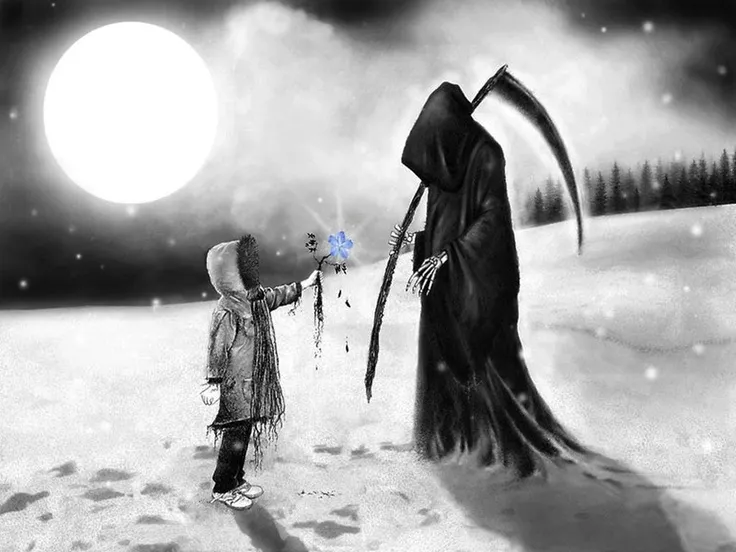

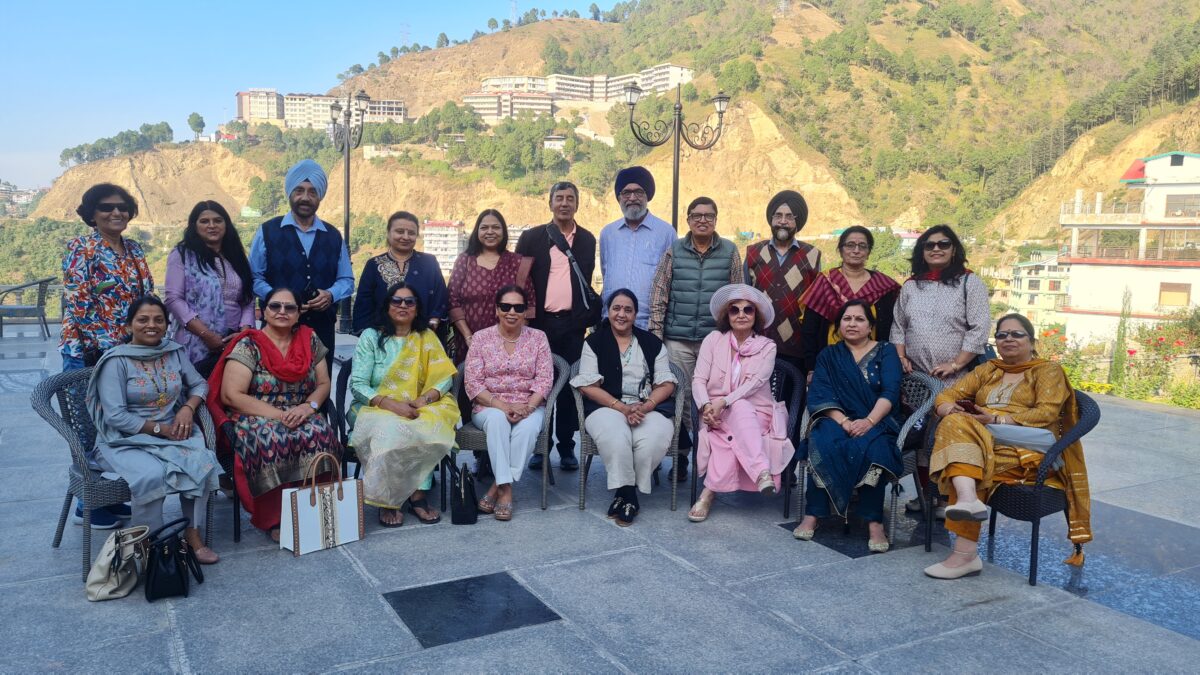
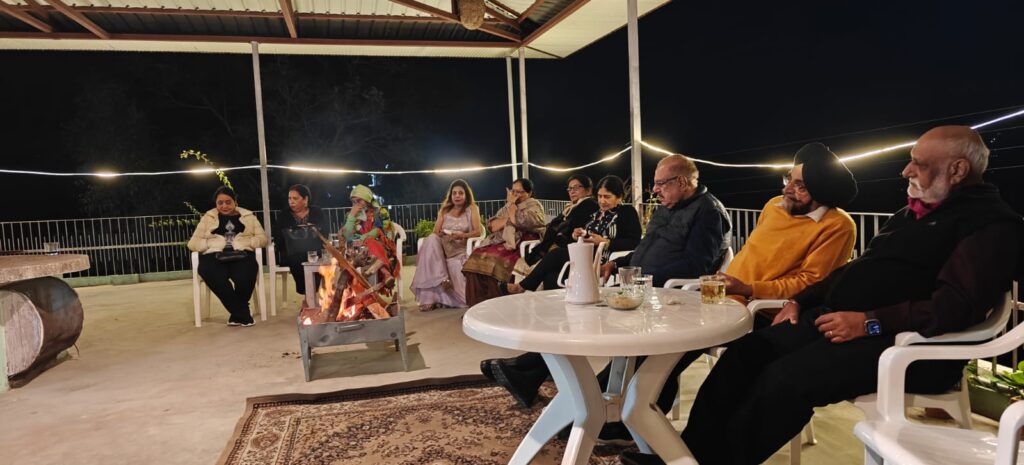
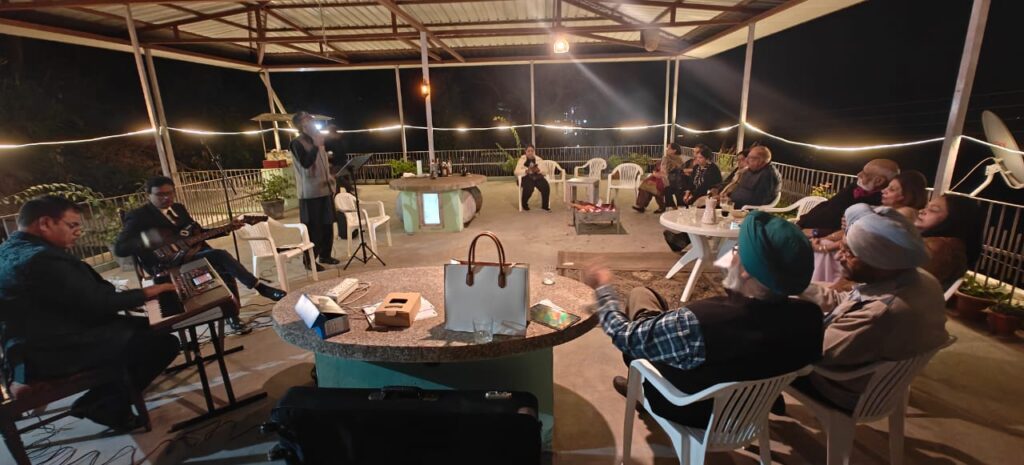

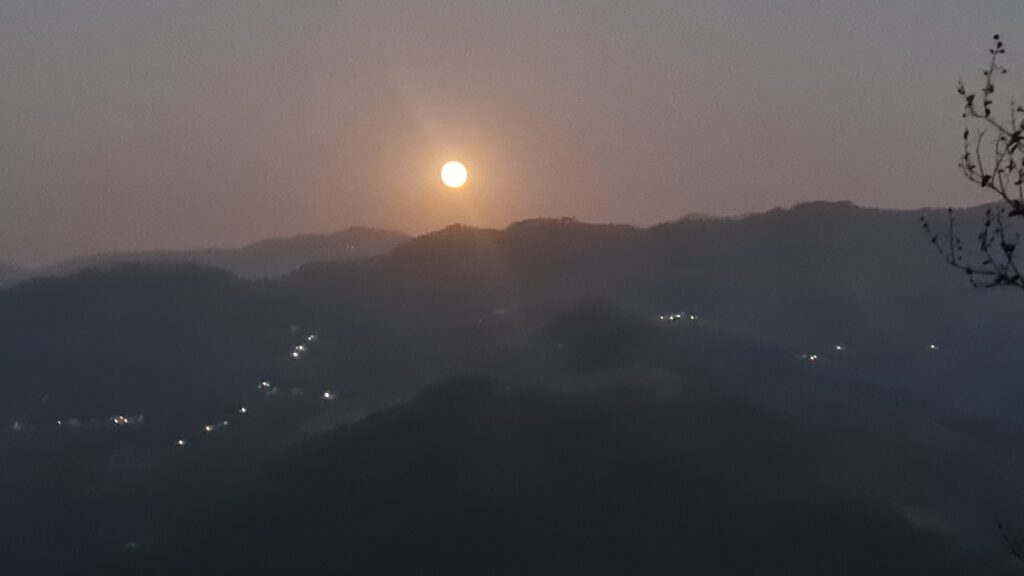
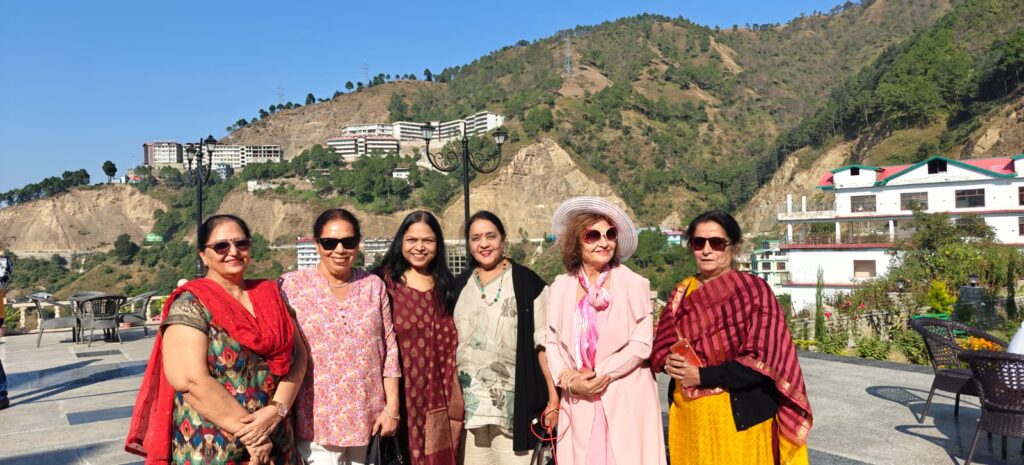
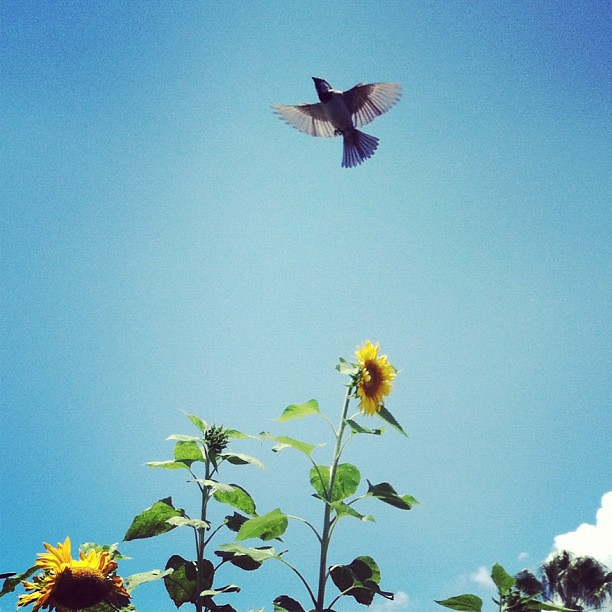
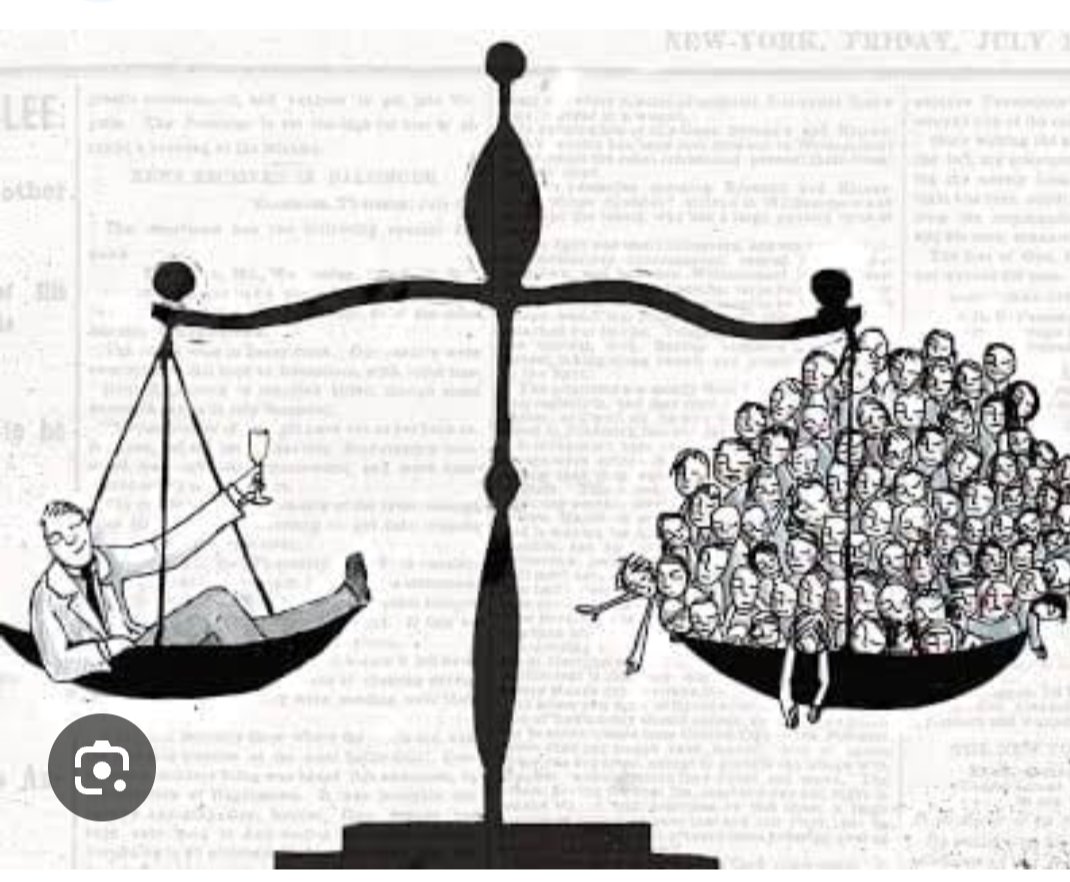

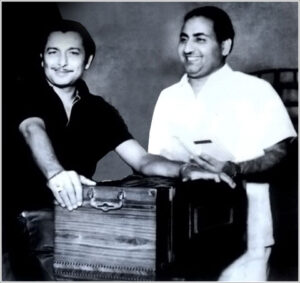
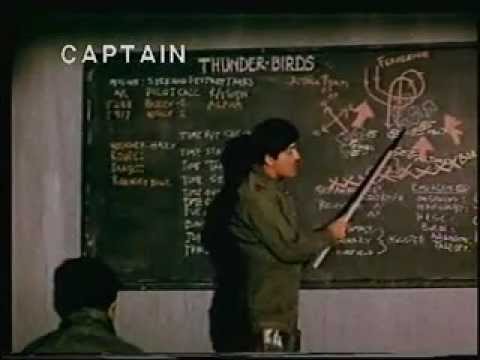 Just like J Om Prakash made many his movies’ titles starting with the letter ‘A’, Chetan Anand made many movies starting with the letter ‘H’: Haqeeqat made after the 1962 Indo China War was the first with the letter ‘H’. It ws followed by Heer Ranjha, Hanste Zakhm, and then Hindustan Ki Kasam. The last one is the 1973 movie from where I have taken this song. The movie depicts the role of Indian Air Force in the 1971 Indo Pak War, in the Western Sector.
Just like J Om Prakash made many his movies’ titles starting with the letter ‘A’, Chetan Anand made many movies starting with the letter ‘H’: Haqeeqat made after the 1962 Indo China War was the first with the letter ‘H’. It ws followed by Heer Ranjha, Hanste Zakhm, and then Hindustan Ki Kasam. The last one is the 1973 movie from where I have taken this song. The movie depicts the role of Indian Air Force in the 1971 Indo Pak War, in the Western Sector.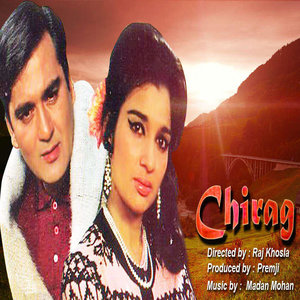 the lyricist Majrooh Sultanpuri take permission from Faiz Ahmad Faiz to use this line from Faiz’s nazm Mujhse pehli si mohabbat mere mehboob na maang made immortal by the singer Noorjehan.
the lyricist Majrooh Sultanpuri take permission from Faiz Ahmad Faiz to use this line from Faiz’s nazm Mujhse pehli si mohabbat mere mehboob na maang made immortal by the singer Noorjehan.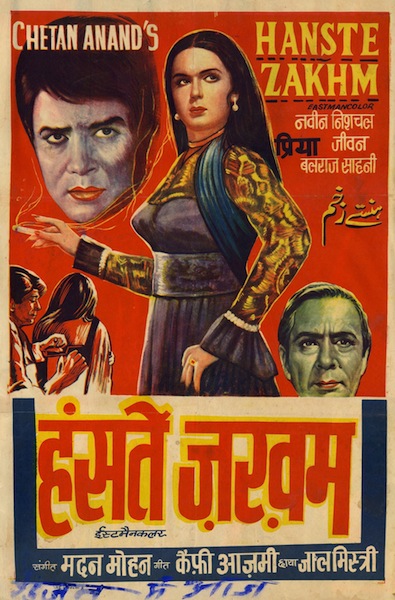 This is from the 1973 Chetan Anand movie Hanste Zakhm starring Naveen Nischol and Chetan Anand’s favourite heroine Priya Rajvansh.
This is from the 1973 Chetan Anand movie Hanste Zakhm starring Naveen Nischol and Chetan Anand’s favourite heroine Priya Rajvansh.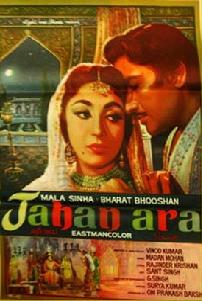 (ghazals) of Madan Mohan. These were on the lyrics of Rajinder Krishan. Indeed, the success of this movie was largely due to these songs. Mala Sinha in the title role nearly got the Filmfare Award. She enacted emperor Shahjahan’s daughter through his most beloved of four wives: Mumtaz, in whose memory he erected one of the seven Wonders of the World: the Taj Mahal.
(ghazals) of Madan Mohan. These were on the lyrics of Rajinder Krishan. Indeed, the success of this movie was largely due to these songs. Mala Sinha in the title role nearly got the Filmfare Award. She enacted emperor Shahjahan’s daughter through his most beloved of four wives: Mumtaz, in whose memory he erected one of the seven Wonders of the World: the Taj Mahal.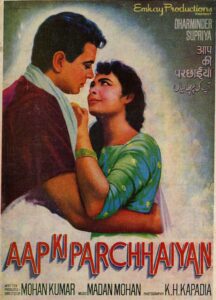 This is from the 1964 Mohan Kumar movie Aap Ki Parchhaiyan starring Dharmendra and Supriya Choudhury.
This is from the 1964 Mohan Kumar movie Aap Ki Parchhaiyan starring Dharmendra and Supriya Choudhury.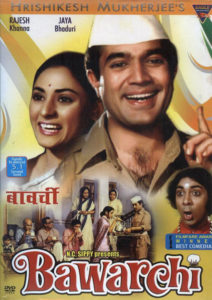 Hemant, Tal Punjabi Theka (Sitarkhani) for the 1972 Hrishikesh Mukherjee movie Bawarchi with superstar Rajesh Khanna in the title role.
Hemant, Tal Punjabi Theka (Sitarkhani) for the 1972 Hrishikesh Mukherjee movie Bawarchi with superstar Rajesh Khanna in the title role.